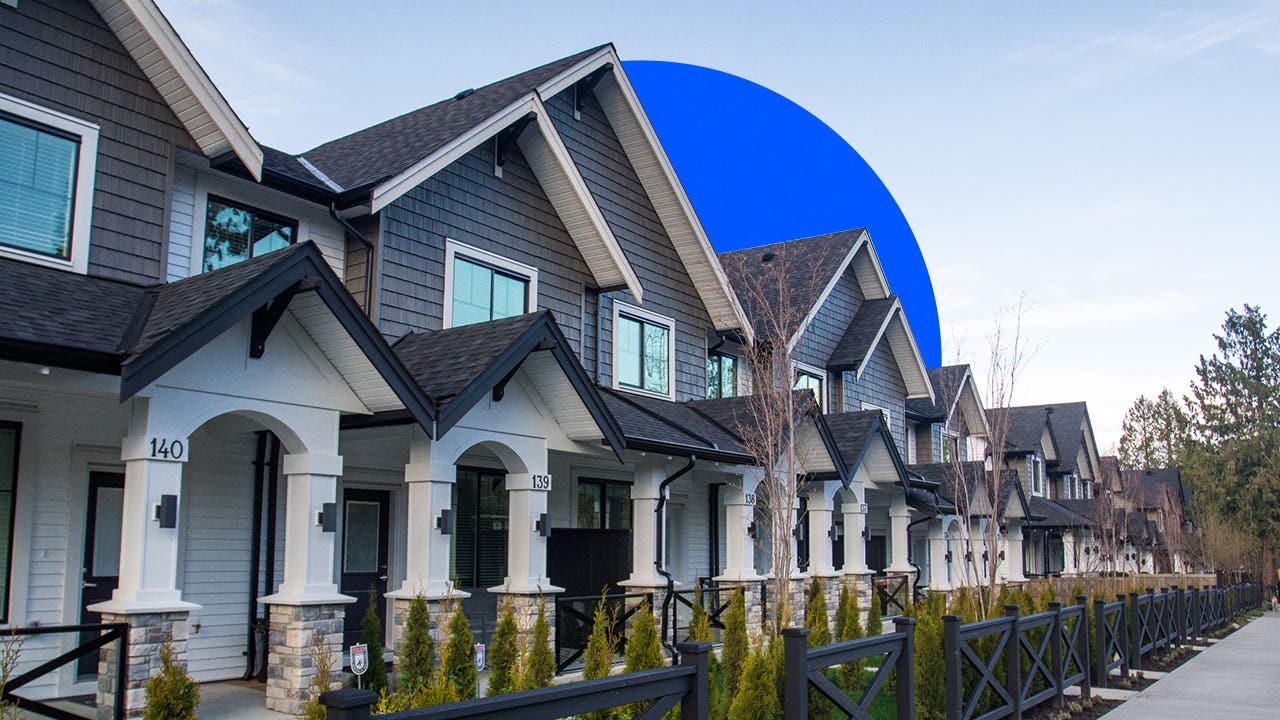No-closing-cost refinance: What it is and how it works

The Bankrate promise
At Bankrate we strive to help you make smarter financial decisions. While we adhere to strict , this post may contain references to products from our partners. Here's an explanation for .
Key takeaways
- A no-closing-cost refinance gets rid of the need to pay refinancing fees upfront, but it's not free. Instead, you'll finance the closing costs — with interest — as part of your new loan, or take a higher interest rate.
- A no-closing-cost refinance saves you some money at closing, but it could end up costing you more in interest in the long run.
- If you're not sure whether to pay closing costs upfront, consider whether you can afford to refinance and how long you plan to stay in your home.
When you refinance your mortgage, you can expect to pay closing costs just like you did with the first loan. If you can’t pay this expense upfront, you might opt for a no-closing-cost refinance, which allows you to finance these fees with your new loan. Here’s how to decide.
What is a no-closing-cost refinance?
In a typical mortgage refinance, the borrower pays a lump sum at closing to cover costs such as the lender’s origination fee and appraisal fees. In a no-closing-cost refinance, the borrower doesn’t pay for these expenses upfront, but rather over time. This could be by one of two methods: The closing costs are rolled into the new loan, increasing the balance; or you’ll pay a higher interest rate.
Many lenders offer no-closing-cost refinances. Some offer a version of a no-closing-cost refinance, in which the lender will waive refinance fees for returning borrowers, or charge a lower flat rate instead of a percentage.
Average closing costs when refinancing your mortgage
The closing costs on a mortgage refinance for a single-family home averaged $2,375 in 2021, according to ClosingCorp. Refinance closing costs vary widely from state to state, however.
A refinance is often far less expensive than a home purchase loan. That’s because you’re not paying for homebuying closing costs like prepaid homeowners insurance or a settlement attorney. In many cases, you’re also only refinancing the remaining, lower balance of your original mortgage. Some of the typical closing costs involved in a refinance include:
- Loan origination fee: Lenders typically charge an upfront fee to cover the costs they incur processing a new loan.
- Credit check fee: Your credit score and profile are a key part of the lender’s review of your application. Often, lenders pass on the cost associated with pulling your credit report to you.
- Appraisal fee: A home appraisal for a refinance provides a current assessment of what your home is worth. Lenders often require this information before they approve a loan.
- Title insurance: Even though you’re simply refinancing, a lender will still require title insurance to protect the new loan against any errors in the property records.
- Prepaid taxes: As part of the refinance closing process, you may need to prepay property taxes for the rest of the calendar year.
- Discount points: If you opt to buy down your interest rate as part of the refinance process, you’ll need to pay your lender for the lower rate.
Costs that come with a no-closing-cost refinance
A no-closing-cost refinance does involve costs — just not upfront. Instead, you’ll have a higher loan balance on a no-closing-cost refinance or a higher interest rate. Here’s how it works.
Say you’re refinancing a $200,000 mortgage to a new, 15-year loan with a lower interest rate. The process will cost you $2,000 in fees. You can hang onto that $2,000 and instead roll the expense into your new mortgage, financing $202,000 over 15 years.
You’ll pay a 7.12 percent rate on this higher balance, costing you a total of $127,288 in interest. If you didn’t finance that extra $2,000, you’d pay $126,012 in interest — a difference of $1,276.
Alternatively, your lender might waive the closing costs in exchange for a higher interest rate. If you were to pay 7.44 percent, for example, on $200,000 over 15 years, it’d cost you $132,530 in interest. At 7.12 percent, you’d pay roughly $6,500 less.
Pros and cons of a no-closing-cost refinance
Pros of a no-closing-cost refinance
- No upfront payment: There’s no need to come up with a few thousand in cash.
- Break-even sooner: When you pay closing costs to refinance, it can take some time for the new monthly payments to help you break even.
- Put closing costs funds to other purposes: You can use the money you would have spent on closing costs for other expenses.
- Savings if you’re moving soon: No-closing-cost refis are often more expensive over the long term, but if you’re only going to have the home for a few more years, you won’t bear the full cost of the higher rate or bigger principal balance.
Cons of a no-closing-cost refinance
- Higher interest rate: Many lenders compensate for the lack of upfront closing costs by charging a higher interest rate. This could be counterproductive if your aim in refinancing is to score a better rate.
- More expensive long-term: Whether it’s due to the raised rate or the increased principal, you’ll be paying more interest. That might outweigh the upfront savings.
- Risk of triggering mortgage insurance: Rolling your closing costs into your new mortgage could also affect your loan-to-value (LTV) ratio. This could reduce your home equity to the point where you are now required to pay mortgage insurance, which adds to your monthly payment.
Who is a no-closing-cost-refinance best for?
It’s important to figure out how long you plan to stay in the property and your breakeven timeline.
- When it makes sense: If you’re planning to move in a year, say, and it will take two to three years to break even on your closing costs, you’ll still realize a net savings while you stay put, even as you pay a little more in interest on your loan than you would otherwise.
- When it doesn’t make sense: If you plan to stay in the property for decades and you’ll break even on your upfront closing costs in just two or three years, then a no-cost closing doesn’t make sense, because you’ll wind up paying more in the long run.
The additional interest on the loan will add up over time. And the longer you have that loan, the higher that cost will go. If you have that loan for decades to come, you may end up paying those closing costs a couple of times over.— Greg McBride, Bankrate Chief Financial Analyst
If you want your lender to roll the closing costs into the refinanced amount, make sure that your total payments (principal and interest) are less than what they would have been had you paid the closing costs upfront. That’s not always the case.
Bankrate’s mortgage refinance calculator can help you determine the actual savings and costs of refinancing your current mortgage.
Other ways to lower refinance costs
Getting a no-closing-cost mortgage isn’t the only way to lower your upfront expenses. Here are some other ways to pay less out of pocket:
- See if you qualify for an appraisal waiver: Some lenders will waive the appraisal fee for existing customers or borrowers who have significant equity in their homes.
- Ask for a break on the app fee: If you’re applying with a bank where you already have accounts, ask if they will comp the application fee or other fees.
- Shop around: This is probably the most important thing you can do. Get quotes from multiple mortgage lenders, and make sure to compare all the different terms — not just interest rates, but closing costs and other fees, too.
Related Articles



